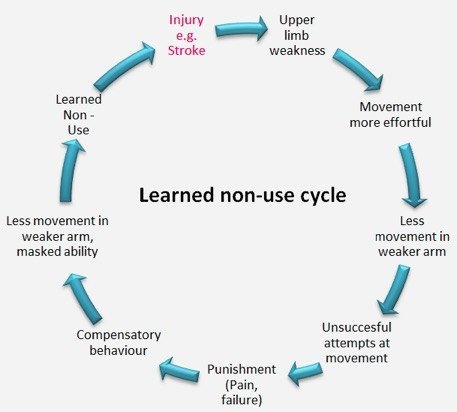Learned Non-Use
Learned non-use is when an individual with a weaker arm can use it, however learns not to because it is easier to use their stronger arm. Constraint induced movement therapy is based on the theory that the affected limb may have a potential but unrealised ability to move due to reliance on the unaffected limb.
Hemiplegia, caused by a neurological event such as stroke or brain injury, is characterised by weakness affecting an arm and hand. In the initial period after injury the person tries to compensate for their weak arm by using their stronger arm more often and their weaker arm less. These individuals often ‘forget’ how to use their affected arm and learn new behaviours with their stronger arm. Often this persists over time and the weaker arm becomes neglected. This is known as learned non-use.

